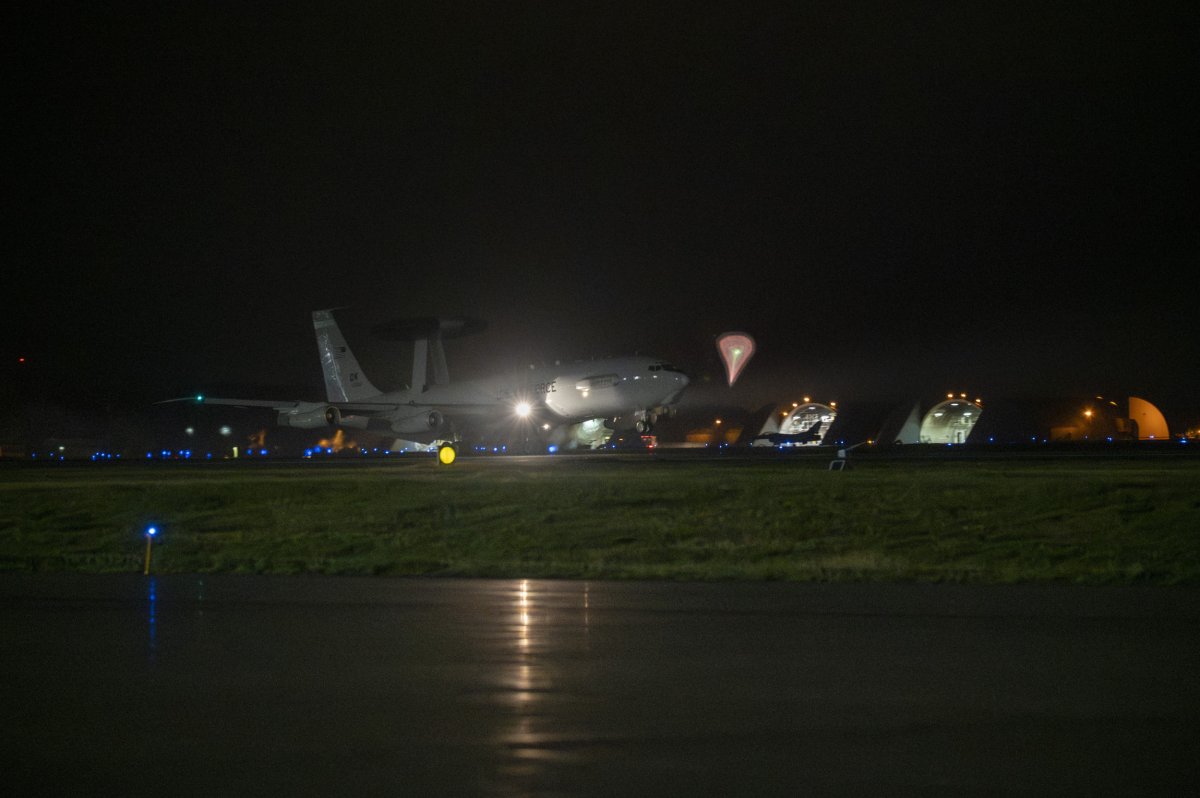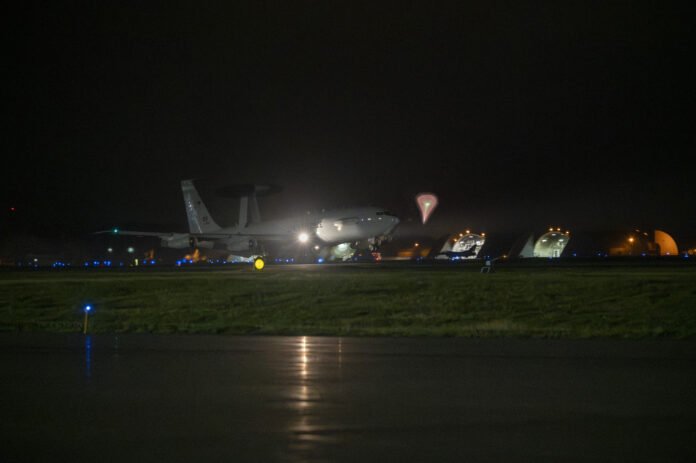The United States launched a large-scale Air Force exercise focused on the Pacific theater this week as the Pentagon prepared for a potential conflict with China over the vast region.
Newsweek has contacted the Chinese defense and foreign ministries for comment via email.
Why It Matters
China, which is rapidly expanding its military power, has been viewed by the Pentagon as its “pacing threat“—a direct, consequential and near-term peril to U.S. security and values—and as its “pacing challenge”—a long-term risk to its influence, position and power.
Taiwan, a self-ruled island democracy, is the primary point of clash between the two powers. The U.S. has vowed to deter Chinese aggression in the Indo-Pacific—Washington’s “priority theater”—while Beijing has declared it will seize Taiwan by force if necessary.
What To Know
A “first in a generation” Department-Level Exercise (DLE) series kicked off on Tuesday and took place across the U.S. and Indo-Pacific region, the U.S. Air Force said. It involved 12,000 personnel from the Air Force and Space Force, along with more than 350 aircraft.
The DLE series is scheduled to incorporate “multiple command exercises” into an overall threat deterrence scenario—including Resolute Force Pacific, which tested the ability to rapidly disperse units across the region to defend the U.S. and its allies.

Airman 1st Class Koby Mitchell/U.S. Air Force
“Our ability to fight and prevail in any contested environment depends on our team’s ability to generate aircraft sorties while under attack and often far away from our main operating bases,” said General Kevin Schneider, the commander of the U.S. Pacific Air Forces.
The Pentagon has warned of China’s growing missile arsenal, which is capable of targeting U.S. military bases and warships in the western Pacific. Experts have also urged the U.S. to fortify its airfields in the region as they are highly vulnerable to a potential surprise attack.
“Training like this alongside the Joint Force, our allies and partners in realistic operating environments using distributed operations is how we integrate capabilities to overcome any national security challenge,” said Troy Meink, the U.S. secretary of the Air Force.
The U.S. Air Force said the DLE series sought to prepare the service to become a “stronger, more lethal deterrent force” that provides an advantage over competitors and adversaries.
Meanwhile, the U.S. Pacific Air Forces announced that multiple B-52H bombers were sent to Andersen Air Force Base in Guam—a U.S. military hub in the western Pacific—from Minot Air Force Base in North Dakota on Tuesday as a Bomber Task Force deployment.
A Newsweek map previously showed where the U.S. rotated its bombers in the Indo-Pacific region. The U.S. Pacific Air Forces said such missions enabled bombers to operate from a “broad array of overseas and continental U.S. locations” with greater operational resilience.
What People Are Saying
U.S. Secretary of the Air Force Troy Meink said in a news release on Tuesday: “This exercise, the first of its kind since the Cold War, marks a pivotal moment for our Air Force and Space Force, bringing together Airmen and Guardians to bolster our nation’s warfighting capabilities.”
U.S. Air Force Chief of Staff General David Allvin said in a news release on Tuesday: “We need Airmen to move fast and think outside the box, disrupting the operational status quo. We also build trust and understanding through deliberate planning, operating and learning alongside our partners across the Pacific.”
General Kevin Schneider, the commander of the U.S. Pacific Air Forces, said in a news release on Tuesday: “We must be ready to operate in austere conditions, with degraded networks, and through disruptions to sustainment chains. Our forces must be self-sufficient, mobile, and capable of rapid adaptation.”
What Happens Next
The U.S. Air Force’s exercise coincided with Taiwan’s annual Han Kuang war game, which began on Wednesday. It remains to be seen whether China will respond to both drills by increasing its military presence around Taiwan and in the western Pacific.


























